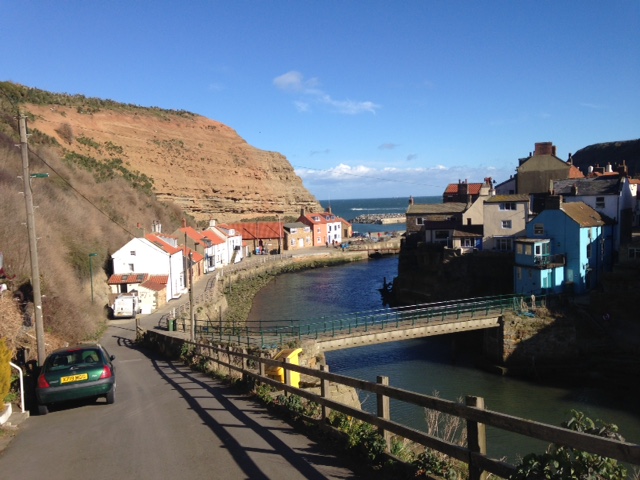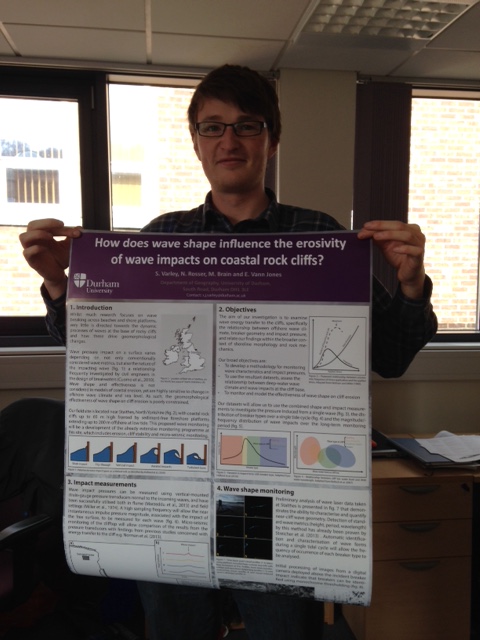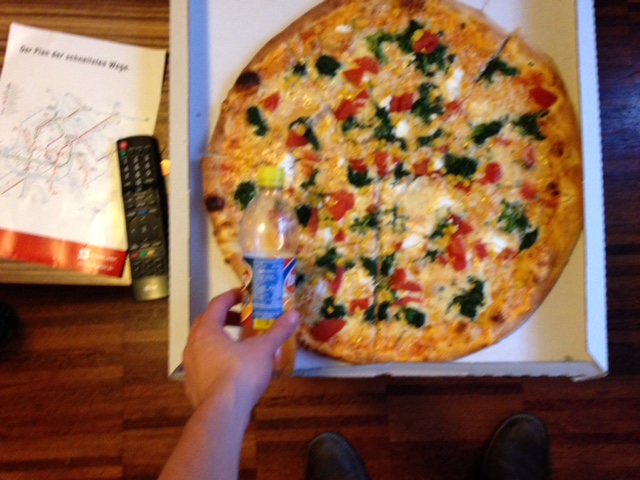A new chapter

Right then, time to take the plunge and write the first of what will hopefully be a regular occurrence from all of us – the first COBRA blog post! And what better time to start than in the convalescent period after what has been a pretty hectic schedule of hand-in deadlines, fieldwork and conferences (not counting my week stomping up mountains in the Lake district…).
In case you haven’t read my profile on the other page, I’d like to introduce myself – my name’s Simon and I’m one of the four new PhDs that started here in Durham with COBRA in October. My research is all about trying to understand the fundamental processes behind rock cliff erosion, specifically what actually happens, in a physical sense, when ocean waves impact a cliff face. I’m interested in the way ocean waves transform as they approach shore platforms, and measuring their geometry as they shoal, break and ultimately impact on the cliff, and there are lots of unanswered questions about how these processes control the effectiveness of coastal erosion. Plus I get to hang out at the seaside.

I was lucky enough to attend two conferences in the past few months, of vastly differing scales.
The first was the two-day Young Coastal Scientists and Engineers Conference, this year at Manchester University. This is a fantastic little conference of around 50 young researchers (“young” being under 35…) all eager and enthusiastic to talk about all things coastal. The talks and poster were surprisingly varied, ranging from global studies of tidal ranges and ocean-scale numerical wave modelling to sea wall construction techniques and fine-scale physical models of hydrodynamics around a wind turbine foundation.
Martin Hurst from BGS gave a cracking talk about one-line modelling of beaches, but I think my favourite of the lot was David McGovern from UCL discussing his plans for a colossal wave tank for the simulation of tsunamis, which will attempt to model the extreme forces that these waves generate on coastal structures.
This is great place to network, see what other researchers are up to and, most importantly, a place to be able to rave about your project to strangers and have them actually listen! I would definitely recommend this conference to any early-stage researchers.

The second conference however, was on a totally different scale. Every year, over 12,000 geoscientists, equipped with poster tubes, anoraks and unforgivable Croc/sock combos, descend on Vienna, Austria for the annual meeting of the European Geosciences Union. Think Glastonbury, but if they’d booked Brian Cox and Iain Stewart as the headline acts. Well, sort of.

Some personal highlights:
- Heather Viles from the University of Oxford gave a great presentation on fluvial biogeomorphology in the Anthropocene.
- A talk on the threat of tsunamis in Lake Lucerne, Switzerland, due to earthquake-driven landslides. When discussing a previous event in 1601, it’s certainly the only time I’ve ever heard a tsunami being described as “two halberds high” and “3 musket shots” inland. So much more practical than metric.
- Not that I saw it, but one of my colleagues witnessed a talk given by a man on roller skates, with “Eye of the Tiger” as a backing track.
- An afternoon of debating on the future of the world’s water resources with some of hydrology and climatology’s top brains, a subject I’ve been interested in since reading Alexander Bell’s “Peak Water” in my undergrad. Although full of great ideas for quenching the thirst of the future global 10 billion, the upshot of the debate seemed to be “it’s up to the politicians, we scientists have done our bit”. I’m not sure I agree with this sentiment, particularly after coming across new tech like this recently – scientists and engineers are still finding new ways to improve water access for all.
- The Geocinema was a little respite from the technical science. It being the International Year Of Soils, there were a couple of great documentaries on the destruction we’ve wrought upon our shrinking productive land, but also how we can solve these problems through sustainable agriculture. Lots of ideas for future soil scientists to get their teeth into.


So all in all, a great couple of conferences, hopefully by my next post I’ll have some interesting spring fieldwork stories.
Simon
